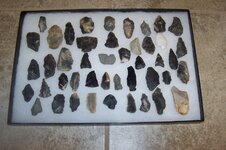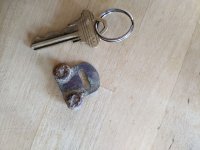rock
Gold Member
Well to get back on subject. When I get permission from the land owner to look for treasure of all kinds. One of the first things I do is get the address of the property. I then google earth it to see the whole area. What I am looking for is high ground and water. With using GE you can go back a # of yrs to see what the property looked like before and present. I then trace the water to see the source if there is one like a spring for fresh water which was needed for drinking. I look for possible camp sites as too high the hills are shaped and am looking for flat spots on top of them that are close to the water. But most of all I only hunt on private property where I have permission to hunt and I always ask the owner before I dig to make sure it is OK to do so. I love to explore and enjoy it. This was from my last hunt. It is now full of crops so no hunting till the winter for me.
Attachments
Last edited:








